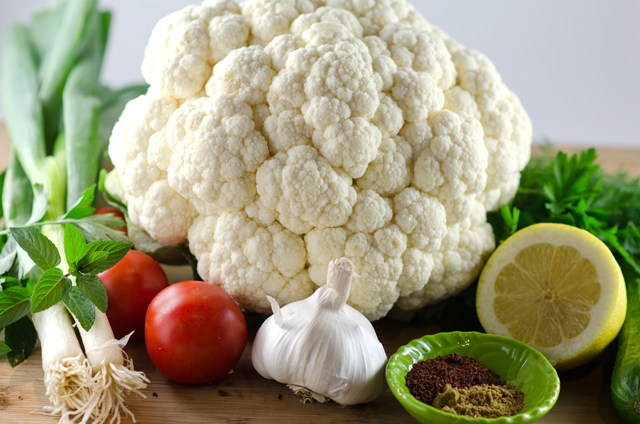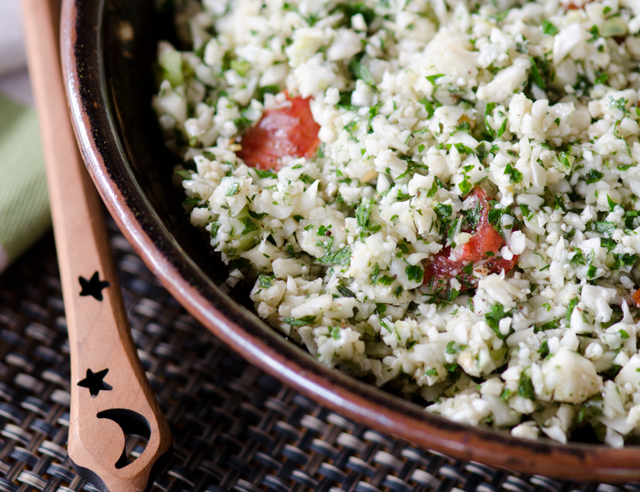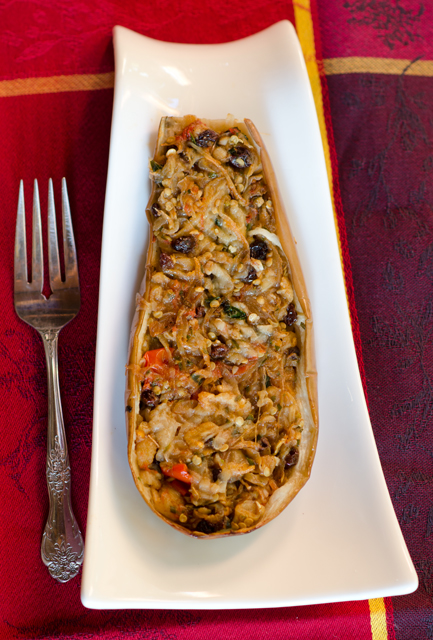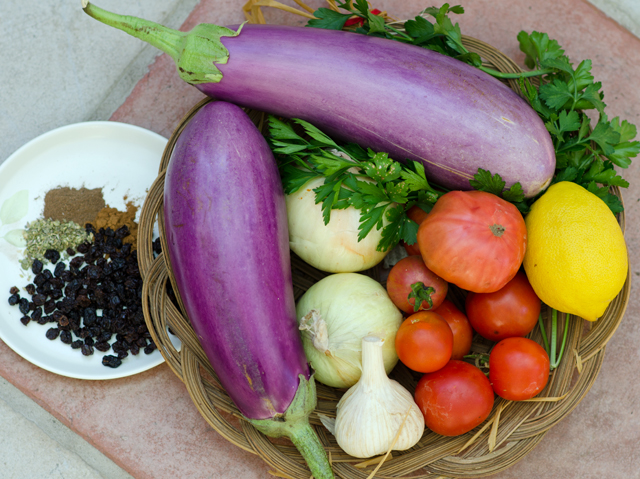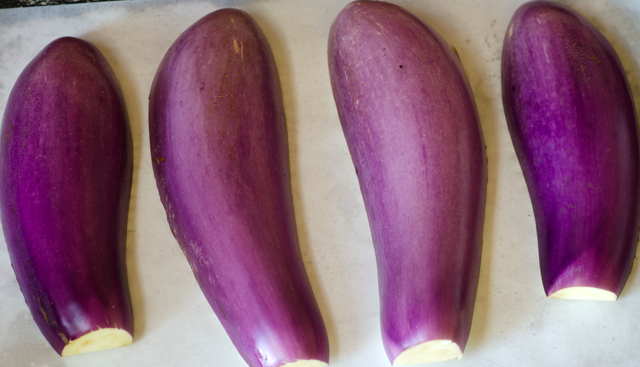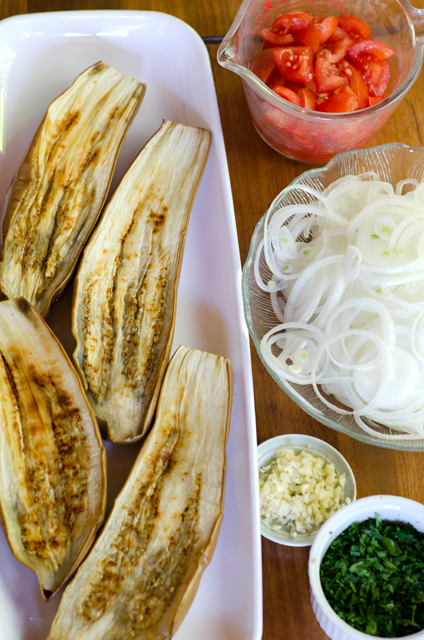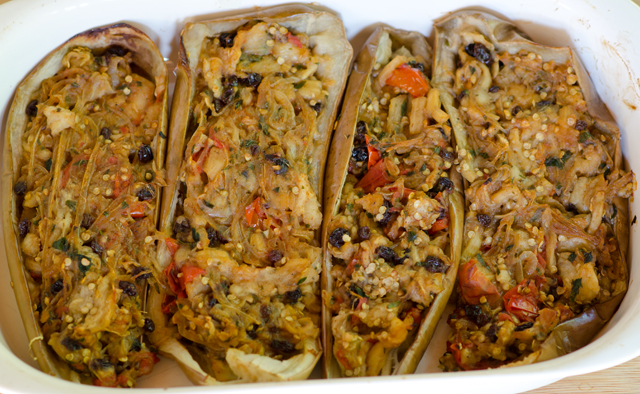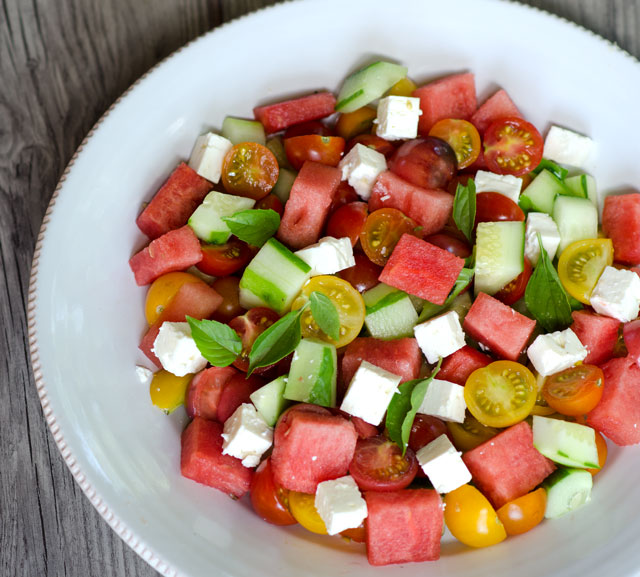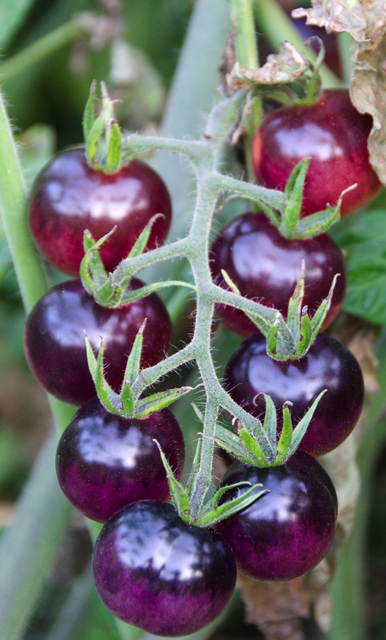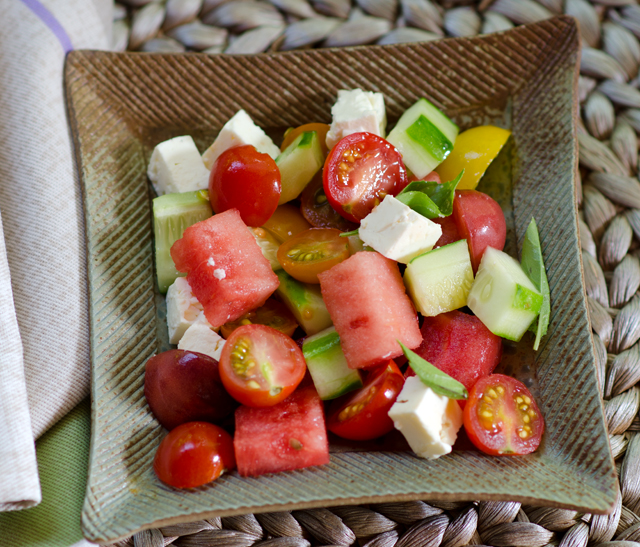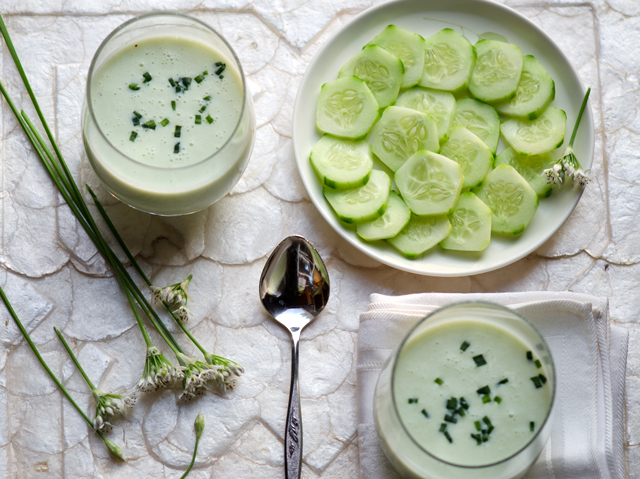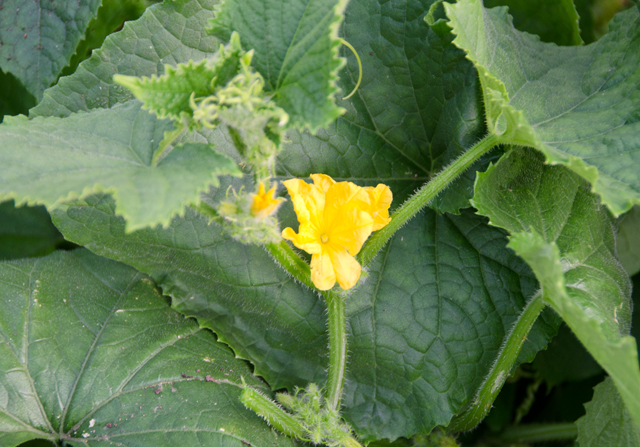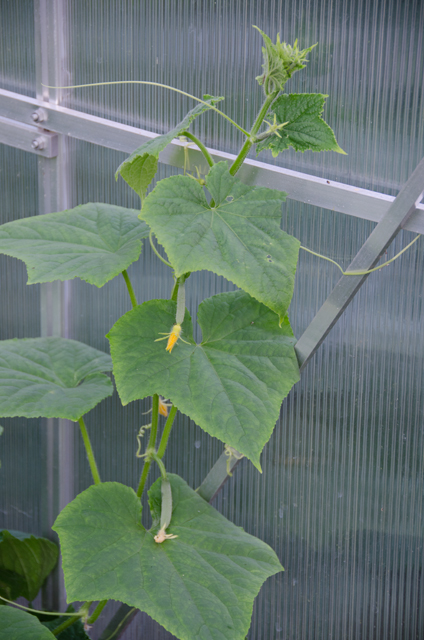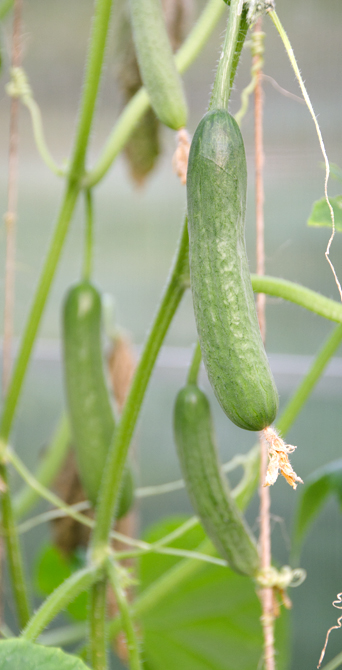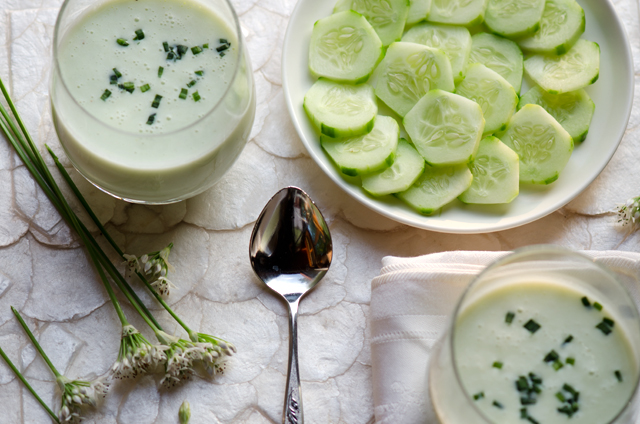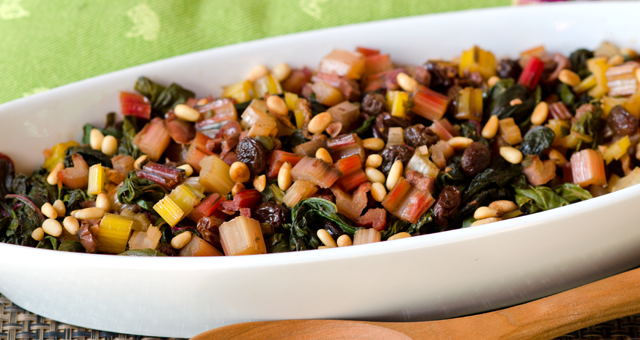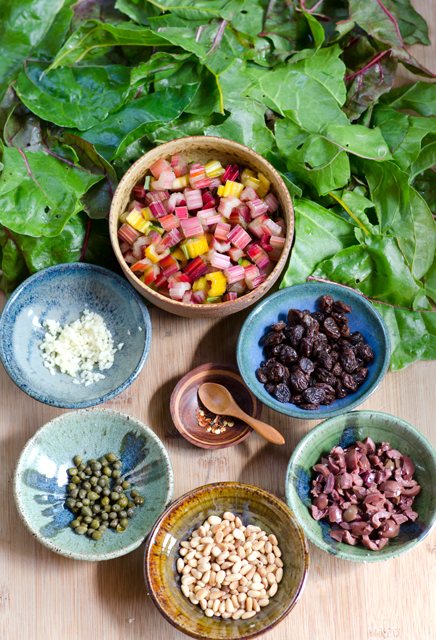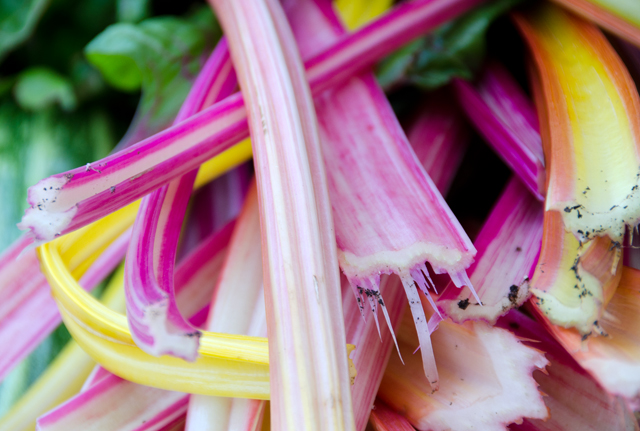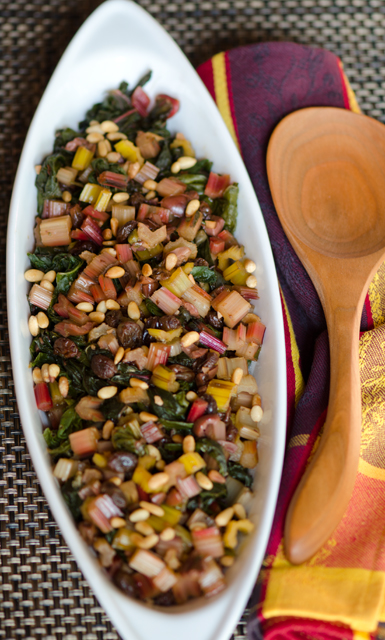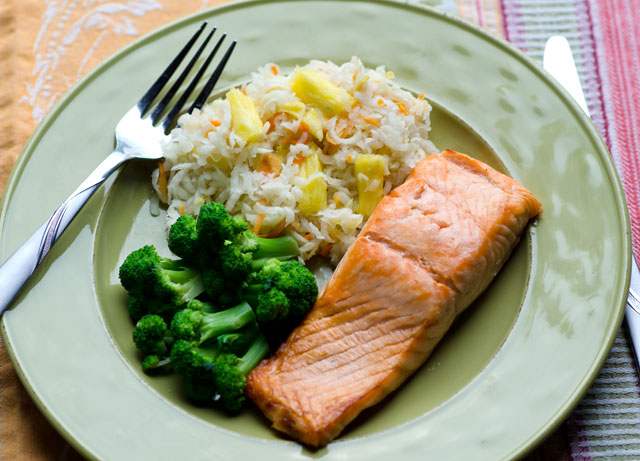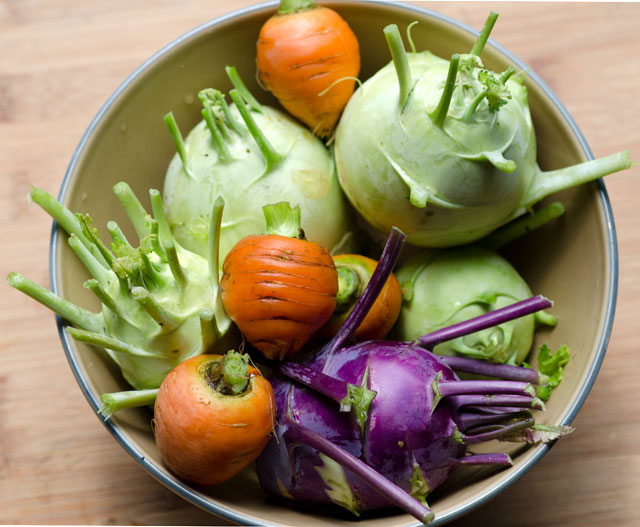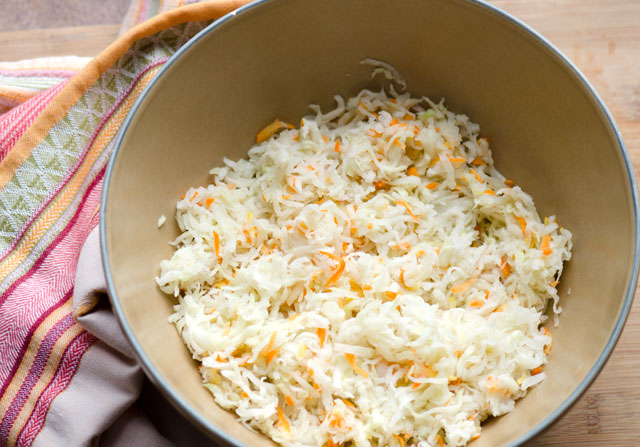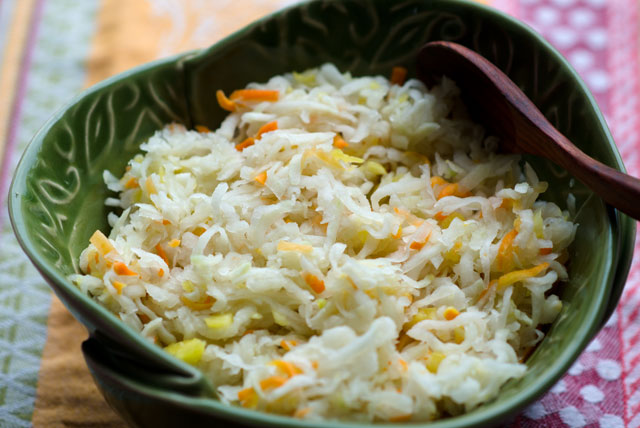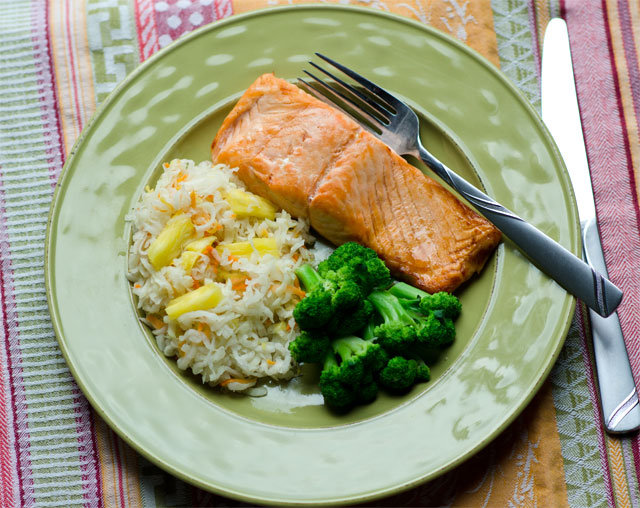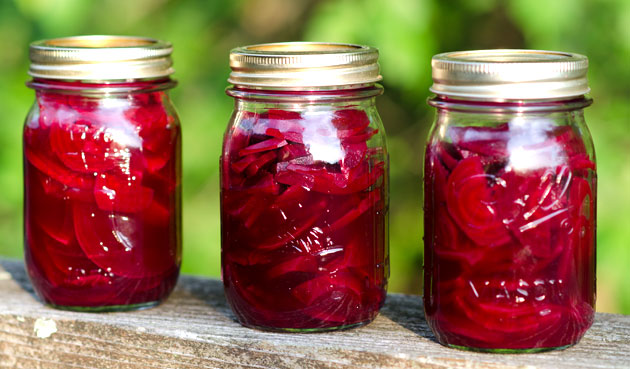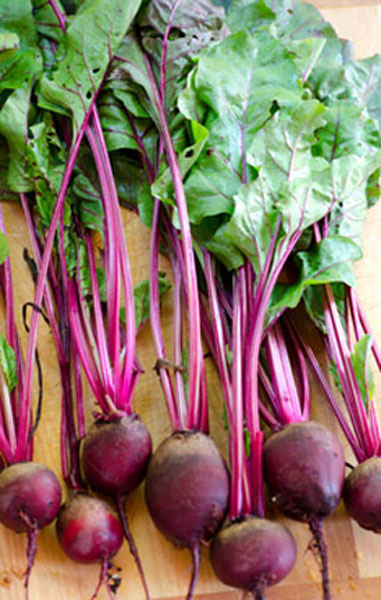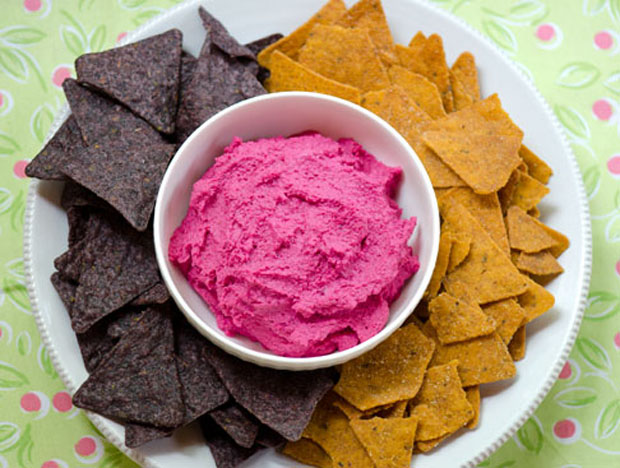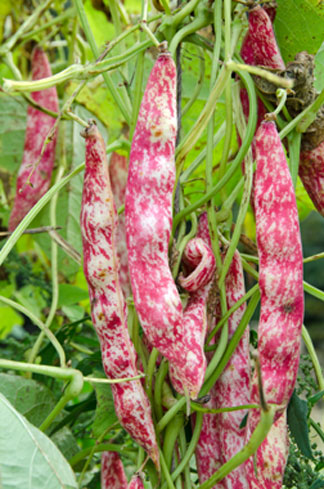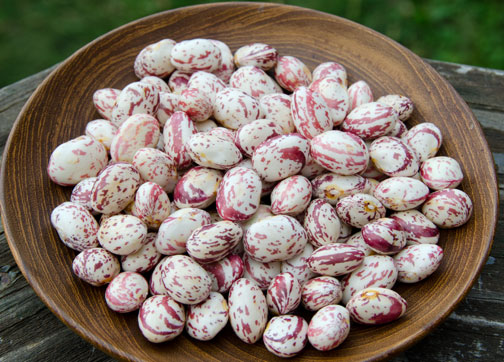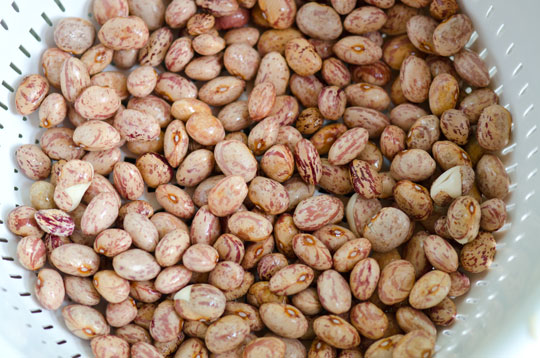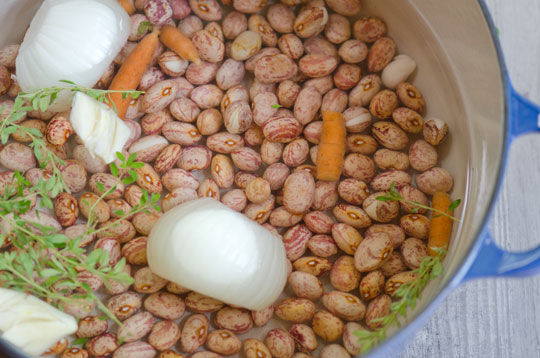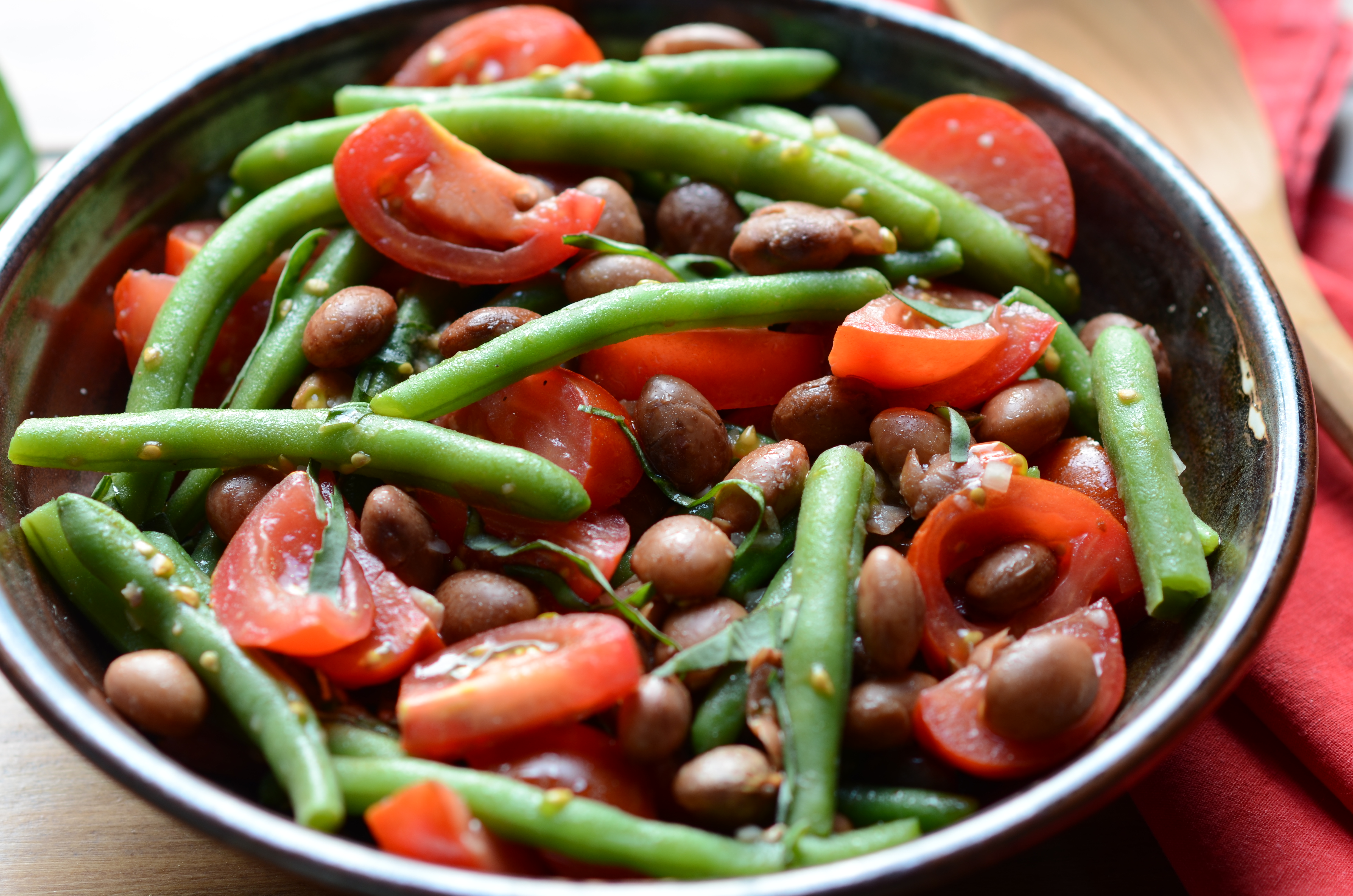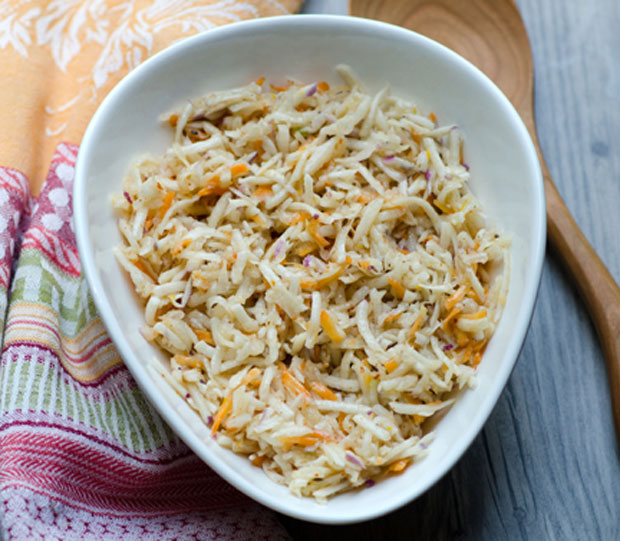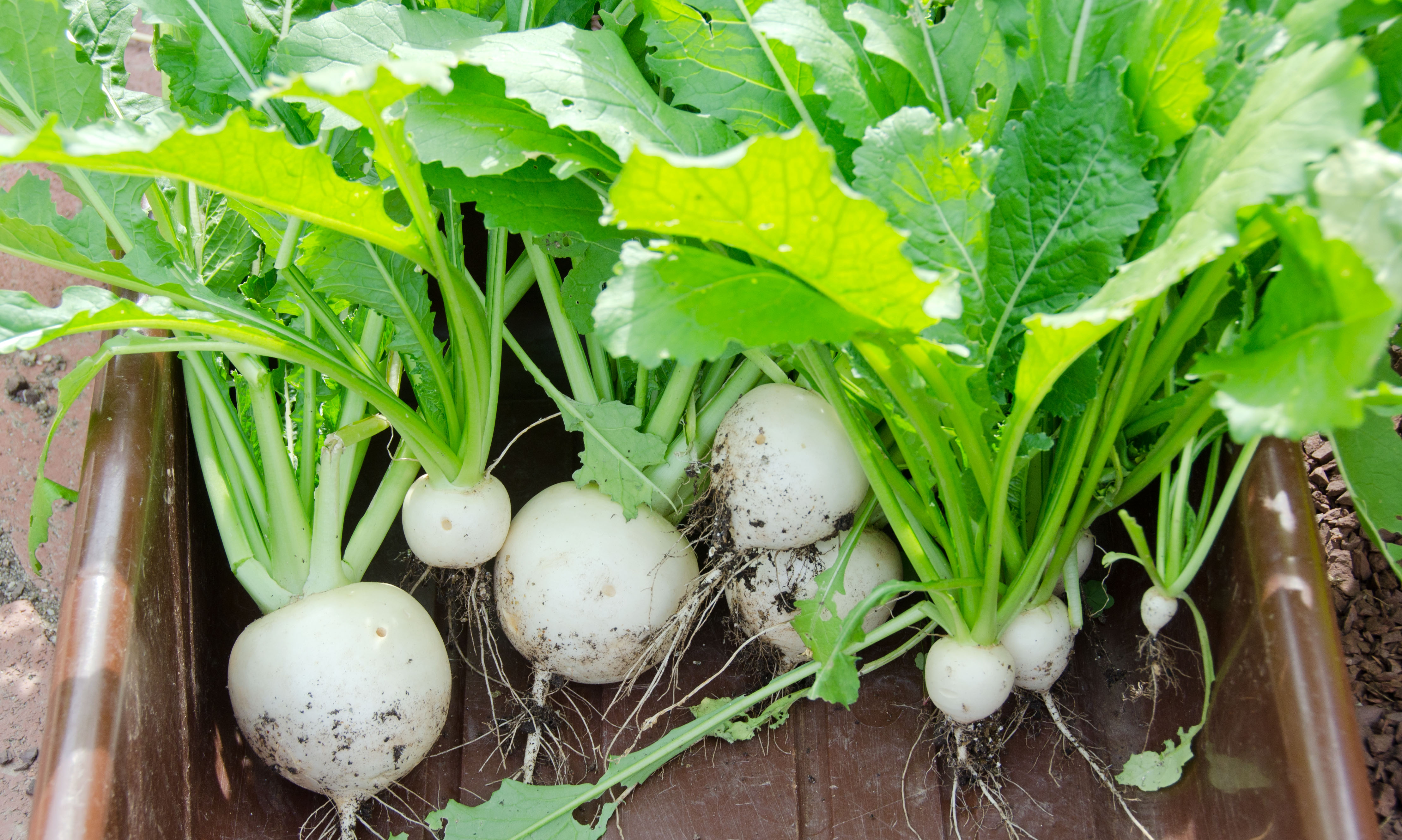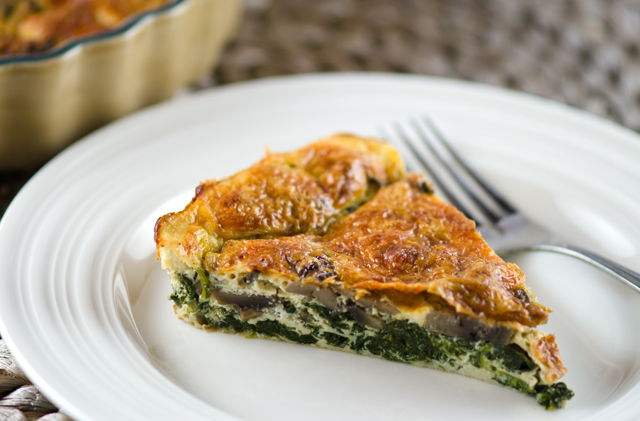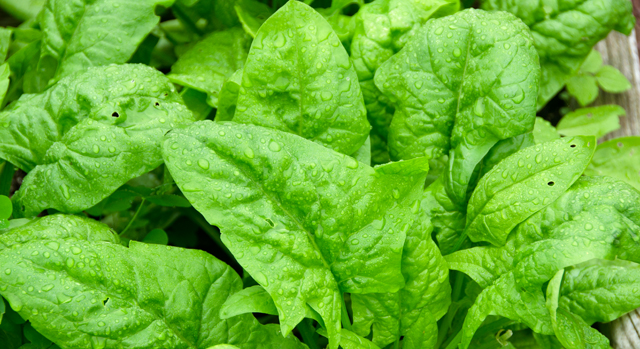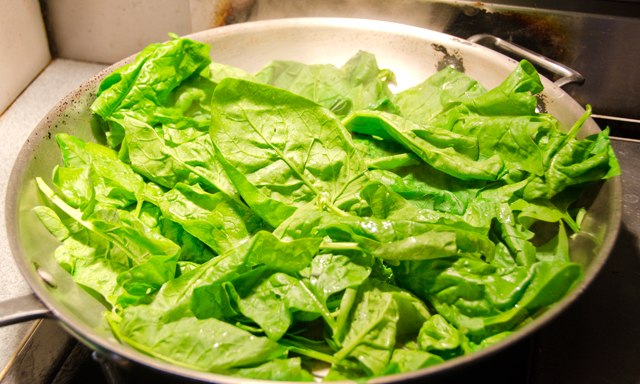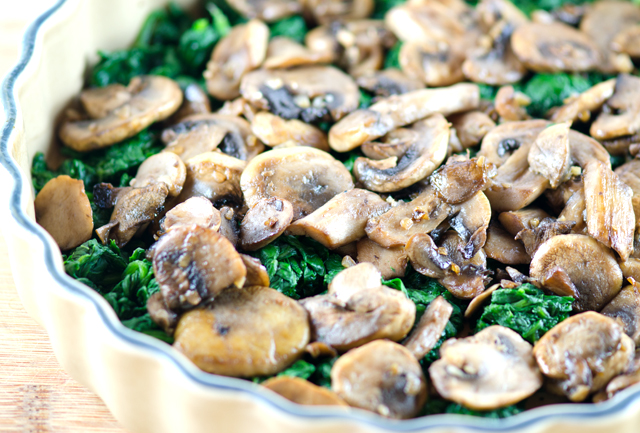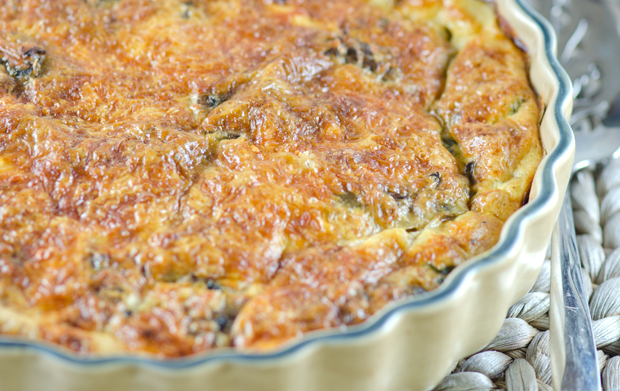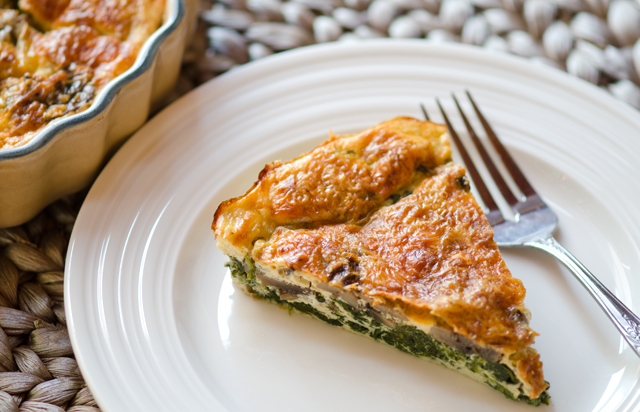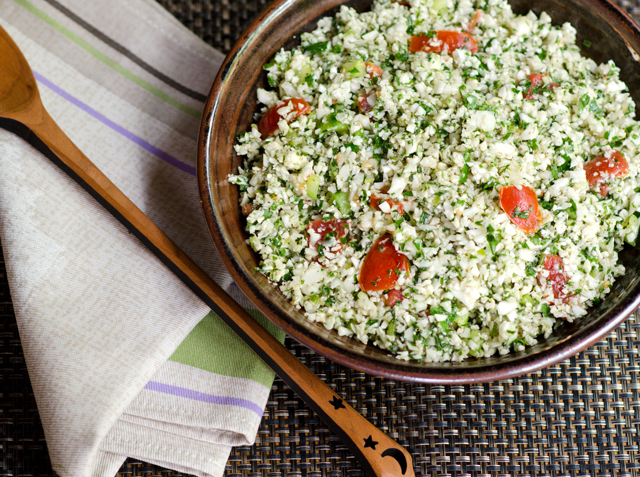 Cauliflower is a master of disguises. Toss cauliflower with olive oil, salt, freshly ground pepper and herbs of your choice and roast it. The florets carmelize and develop a nutty quality, reminiscent of popcorn. Because that’s how you will consume it, like popcorn. Or simmer it until very tender, mash it up with milk and butter (or your reasonable substitute of choice) and you have a side as flavorful as any bowl of mashed potatoes.
Cauliflower is a master of disguises. Toss cauliflower with olive oil, salt, freshly ground pepper and herbs of your choice and roast it. The florets carmelize and develop a nutty quality, reminiscent of popcorn. Because that’s how you will consume it, like popcorn. Or simmer it until very tender, mash it up with milk and butter (or your reasonable substitute of choice) and you have a side as flavorful as any bowl of mashed potatoes.
This time cauliflower takes the place of coarsely ground bulgur in a mock tabbouleh. Taboulleh is a Lebanese herb salad with bulgur, as food historian Clifford A. Wright points out in his book, Little Foods of the Mediterranean, not a bulgur salad with herbs. The advantage of using cauliflower is that, unlike bulgur, it will not continue to expand as the dish sits. By the nature of the vegetables in it, the mock tabbouleh will exude more liquid, so be judicious in the amount of dressing you use. If you have any leftover the next day, drain any excess liquid off before serving.
This was an opportunity for me to use a new acquision in my battery of herbs and spices, sumac. Not related to the poisonous variety, it is extracted from the berries of a bush that grows wild in Mediteranean regions. The berries or drupes are ground into a reddish powder that adds an astringent lemony taste to salads or meat dishes. Combined with dried thyme and sesame seeds, it’s also part of a seasoning blend from the Middle East called z’atar.
Other additions to the salad could include chickpeas or some finely chopped bell pepper. For an “authentic” presentation, serve with romaine lettuce leaves to scoop up the tabbouleh. This is a recipe that got a big thumbs up from my hubby, who thought it tasted even better the second day.

Cauliflower Tabboulleh
Serves 6-8
Ingredients for the Dressing
- 1T finely grated lemon zest
- 3T fresh lemon juice
- 1T red wine vinegar
- 1/3-1/2c safflower or avocado oil
- 1/2t ground cumin
- 1/2t ground sumac
- 1t kosher salt
- 1/4t freshly ground black pepper
Directions for the dressing
- In a small bowl, whisk together lemon zest, lemon juice,vinegar, oil, cumin, sumac, salt and pepper. Set aside
Ingredients for the tabboulleh
- 6-8 c cauliflower florets, use the stem part to make cauliflower “mashed potatoes”
- 1c chopped cucumber, peeled, seeded and chopped into 1/2″ dice
- 1c chopped tomato
- 1 1/2c fresh flat leaf parsley leaves, chopped
- 1/2c dill leaves, chopped
- 1/4-1/2c mint leaves, chopped
- 3-4 green onions, thinly sliced
- 2 cloves finely minced garlic
Directions for the tabboulleh
- Chop cauliflower florets in a very fine dice, either with a box grater, by hand or in a food processor with short, quick pulses. Do not overcrowd the processor, you may have to do this in batches. The final product should resemble medium bulgur grains. Transfer the chopped cauliflower to a large bowl. Add the chopped cucumber and tomato.
- Add chopped parsley, dill, mint, green onion and garlic to workbowl to chop more finely. Transfer to the bowl with the cauliflower. Gently mix to combine, add dressing and mix again. Taste for seasoning and serve.
